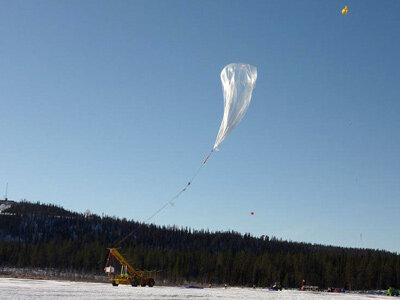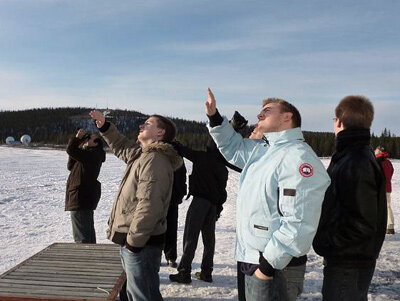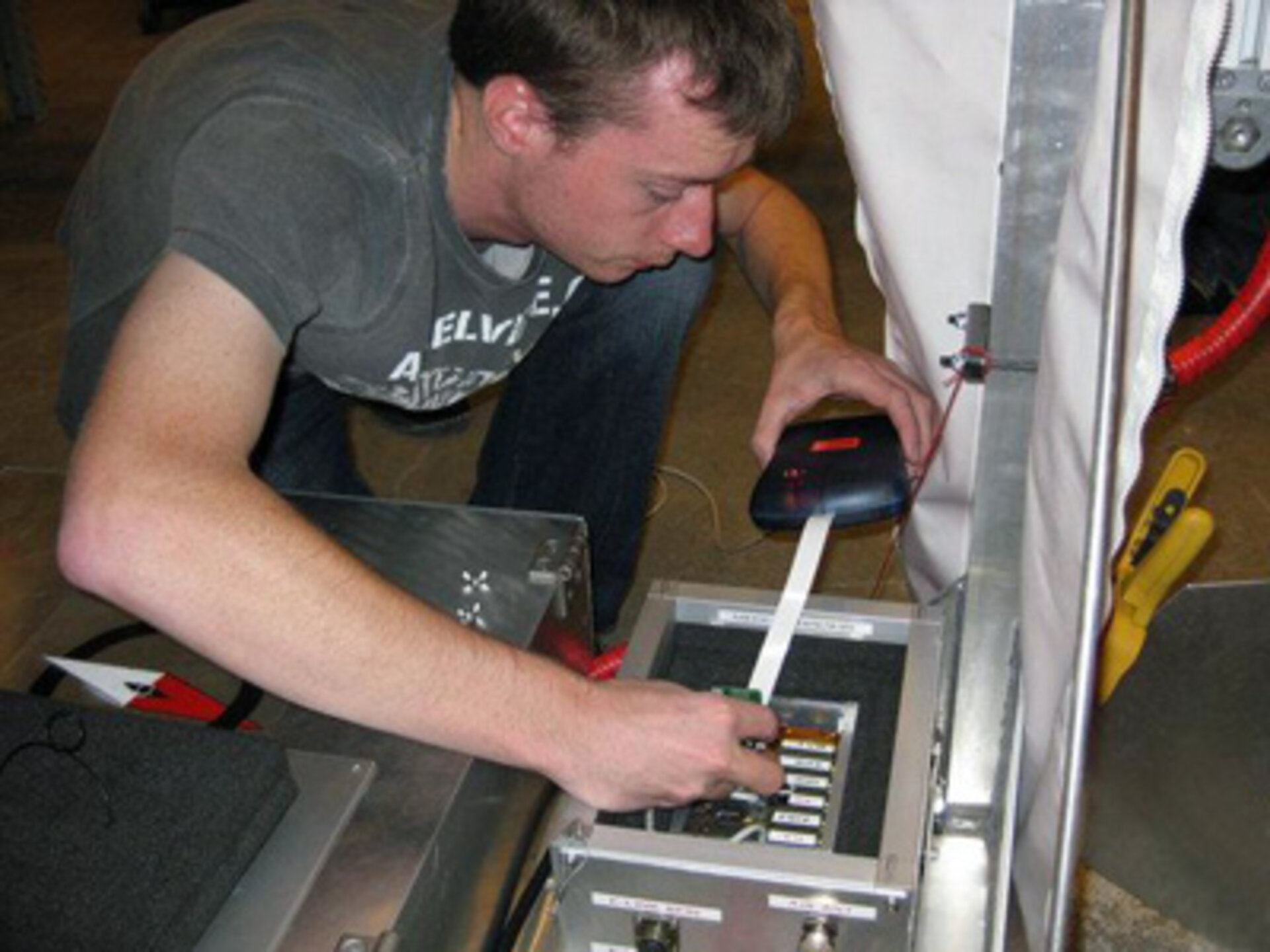BEXUS 8 and 9 campaign completed
The latest flights in the Balloon Experiments for University Students (BEXUS) series have been completed successfully. Even as the students analyse the results of their experiments, ESA and its partners have issued a call for proposals for next year’s balloon and rocket campaigns.
The BEXUS 8 and 9 programme began on 4 October, when teams of students from European universities arrived at the Esrange launch site in Sweden, north of the Arctic Circle. The next two days were spent preparing and testing the payloads, with a further five days set aside as possible launch opportunities for the giant helium-filled balloons. Various tours of the facilities and educational presentations were also included in the programme.

The first launch eventually took place on 10 October, carrying two experiments sponsored by the German Aerospace Research Centre (DLR). The BEXUS 8 balloon provided one hour of research time at an altitude of 27 km. BEXUS 9, loaded with 5 ESA-sponsored experiments, followed on the next day. This time, the balloon stayed aloft at an altitude of 24 km for a duration of two hours.
ESA-sponsored experiments
The five ESA-sponsored experiments on BEXUS 9 were:
COMPASS (Calculating and Observing Magnetic Polar field intensity in the StratoSphere) – University of Bologna, Italy.
CRIndIons (Measuring Cosmic Ray Induced Ionisation) – Luleå University of Technology, Sweden, Charles University, Prague and Czech Technical University, Czech Republic.
NAVIS (North Atlantic Vessel Identification System) – Aalborg University, Denmark. A technology test for a student satellite which will receive Automatic Identification System (AIS) signals from nearby ships.
reel.SMRT – ‘Erasmus Mundus’ Space Masters course, a collaboration between six European universities. An experimental gravity research platform for high altitude balloons.
SO-hIgh – Université Catholique de Louvain-la-neuve, Belgium. A ‘weather report’ experiment using MEMS ((Micro-Electro-Mechanical Systems) built with Silicon-on-Insulator (SOI) technology.

Preliminary analysis indicates that the NAVIS experiment provided excellent coverage at high altitude and was successful beyond expectations. The team received and decoded 24,000 AIS packets from ships in the area. The COMPASS, SO-hIgh and CRIndIons experiments also performed well, though the reel.SMRT experiment experienced breaks in the line attached to the deployed microgravity platform and was only partially successful.
“Our team are really happy with the results we’ve seen so far and there is lots of analysis to come,” commented Alban Jago, the SO-hIgh team leader.
“Although full functionality was not achieved, the team are satisfied with their efforts and performance in addressing this complex question. We feel that we have learned an enormous amount,” said Katherine Bennell, the reel.SMRT team leader.
Next campaign
The call for proposals for the BEXUS 10/11 and REXUS 9/10 launch campaigns is now open, with an entry deadline of 17 November. University teams are encouraged to think of an experiment idea and apply. Further details can be found on the project website.
REXUS is a bilateral German-Swedish cooperation between the German Aerospace Center (DLR) and the Swedish National Space Board (SNSB) that offers students opportunities to fly their own experiments on sounding rockets.
Half of the payload is reserved for German students, while the Swedish half has been made available to students from other European countries through a collaboration with ESA's Education Office. EuroLaunch, a joint venture of Esrange (Swedish Space Cooperation) and the Mobile Rocket Base MORABA (DLR), is responsible for the campaign management and operations of the sounding rockets.




